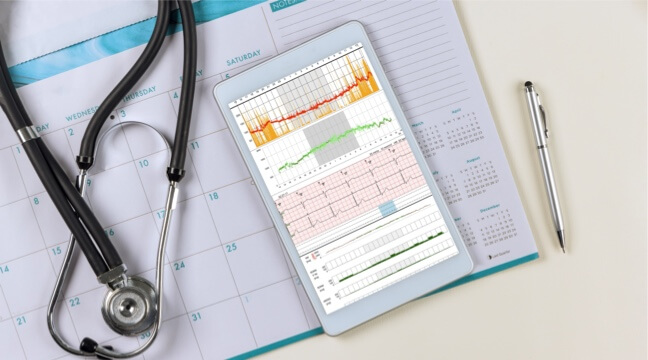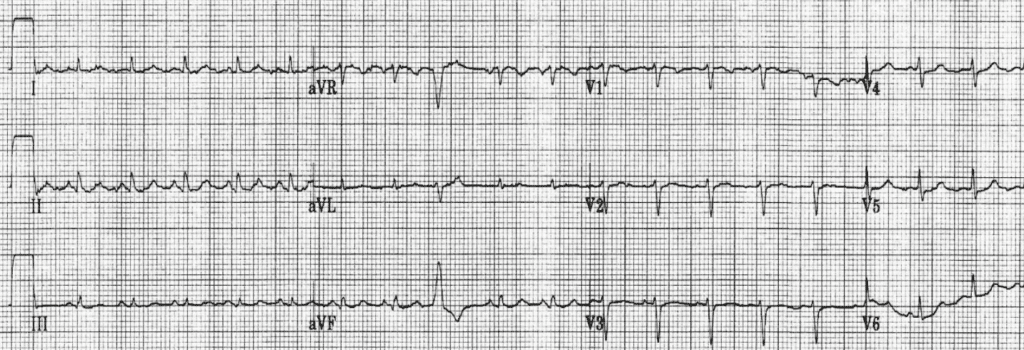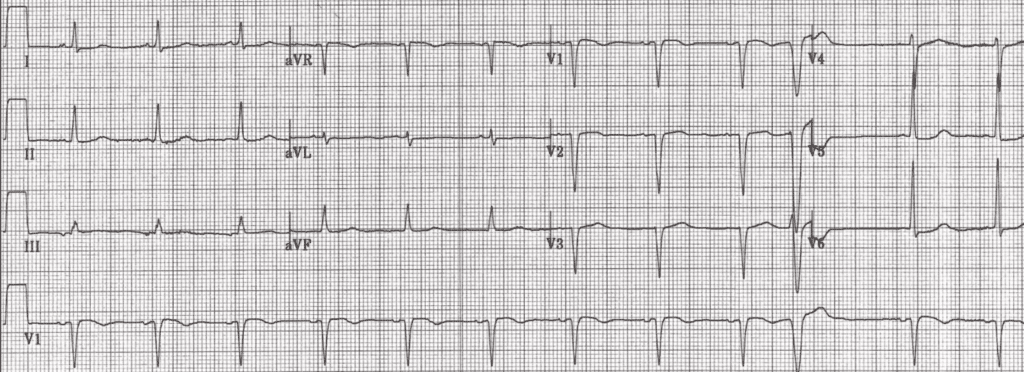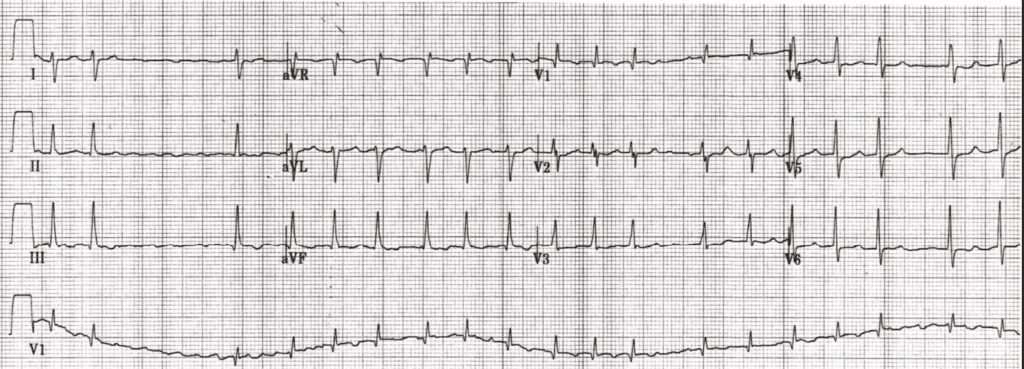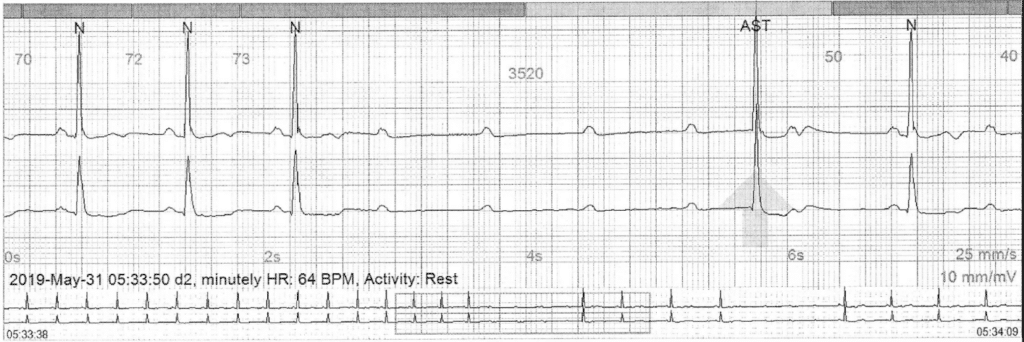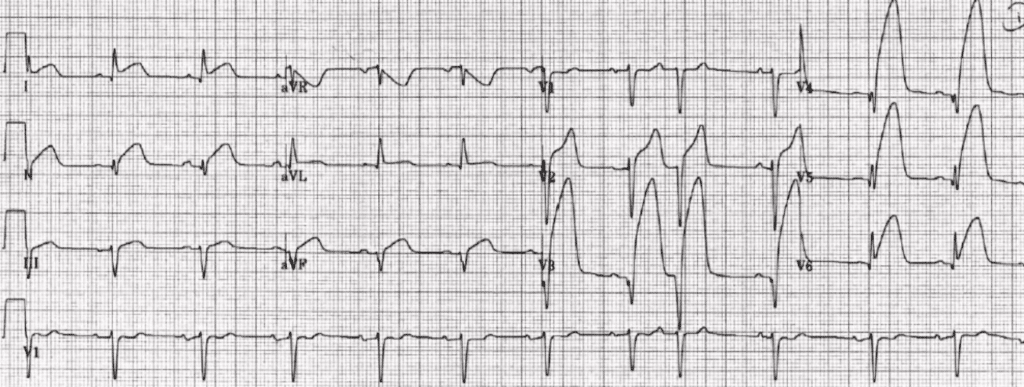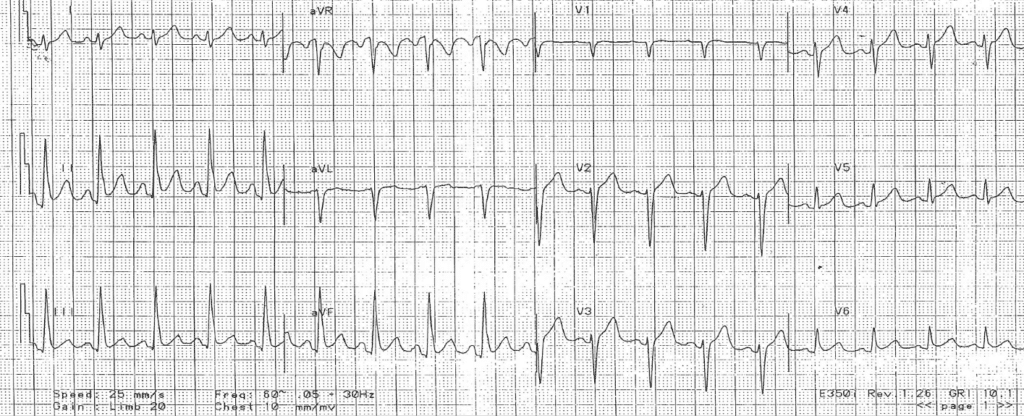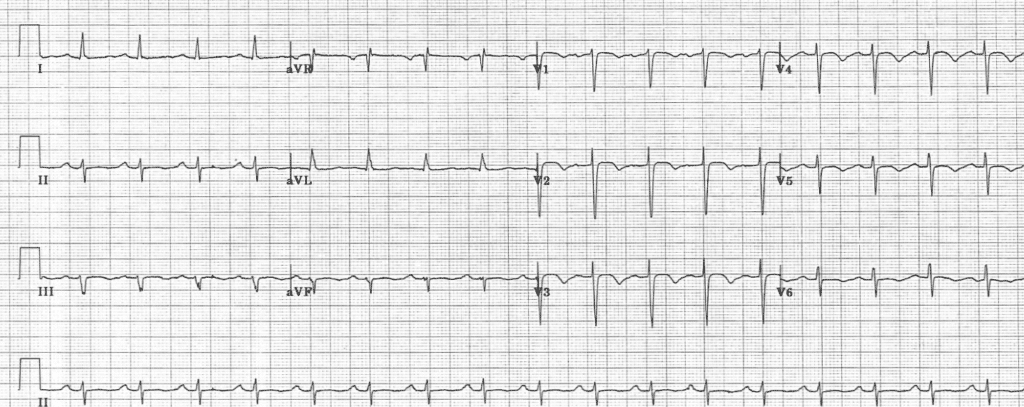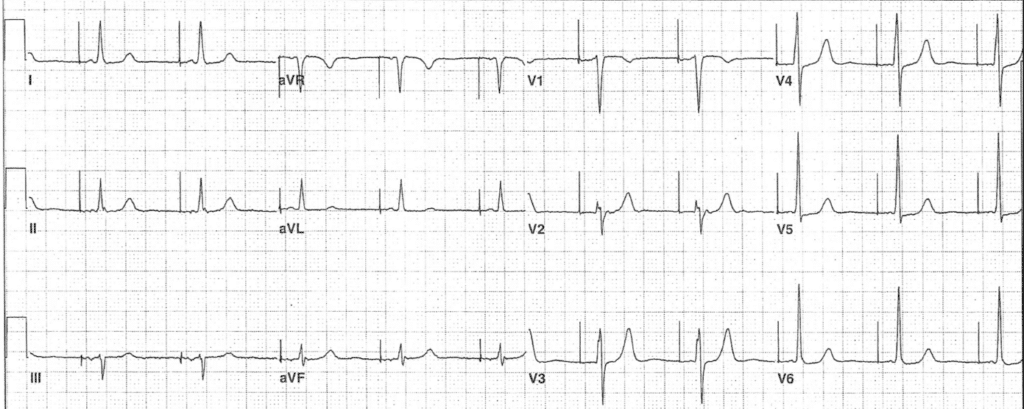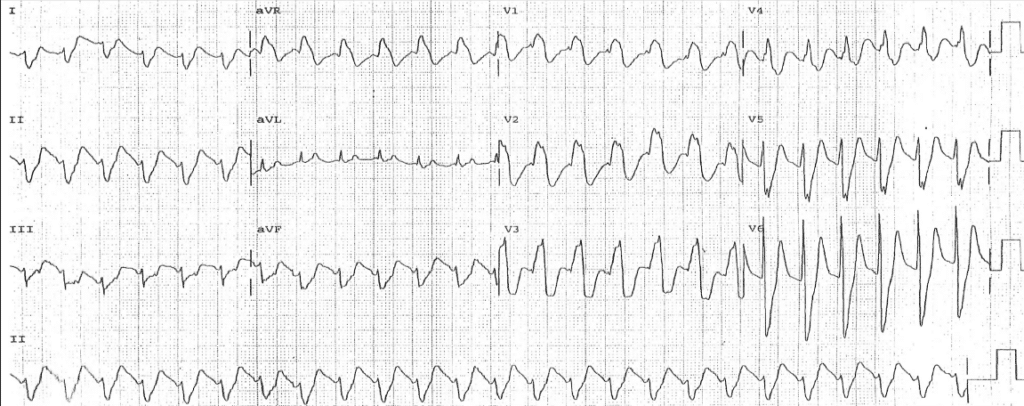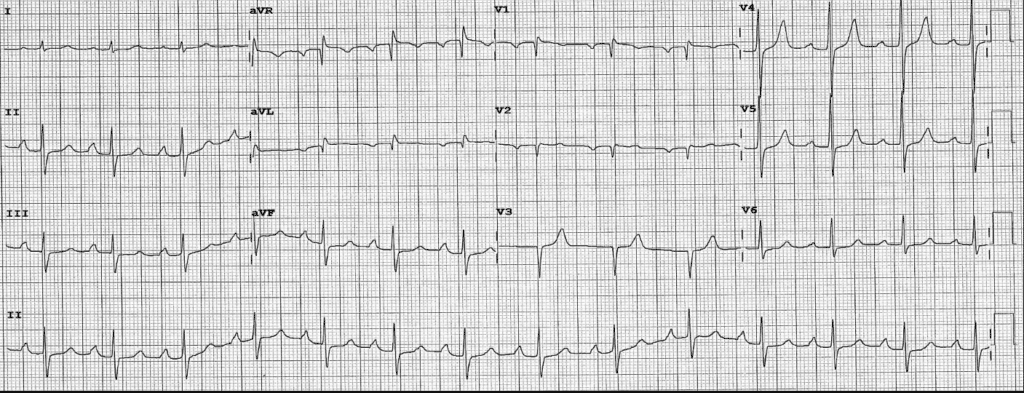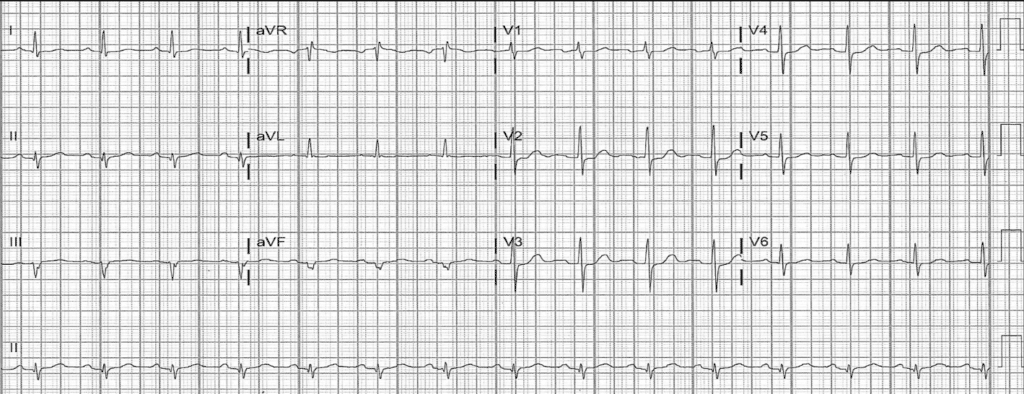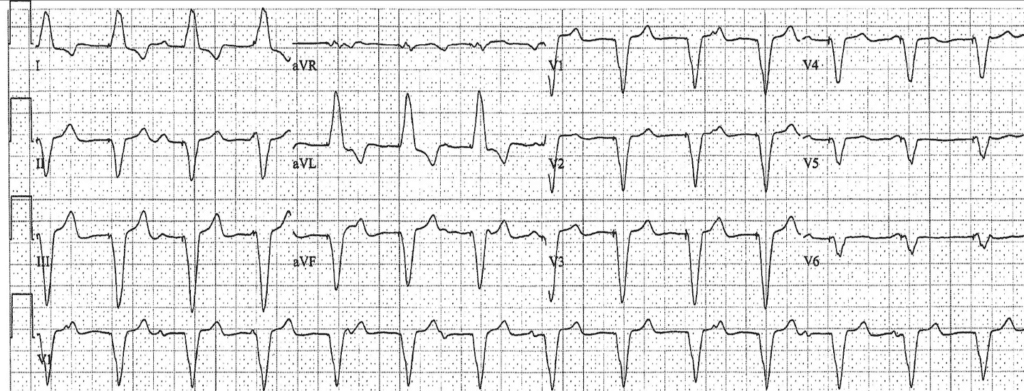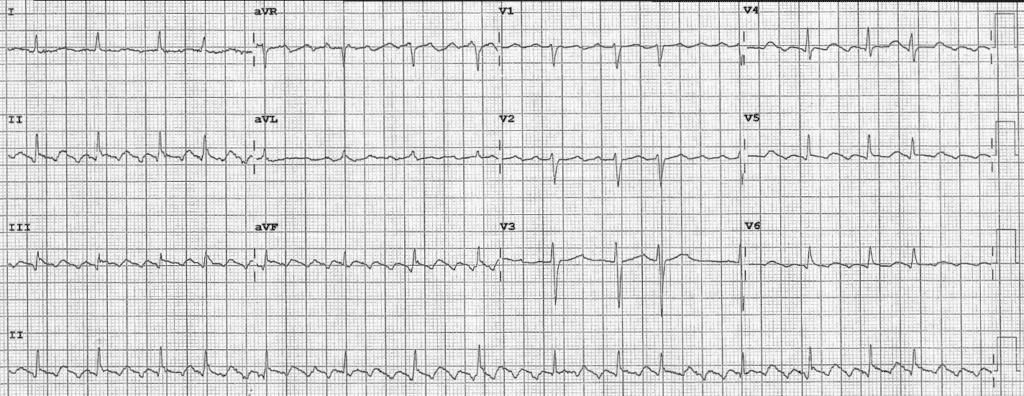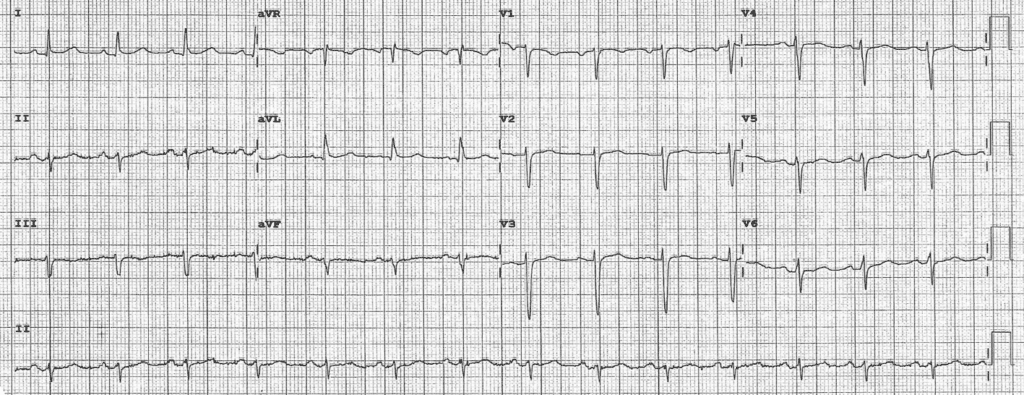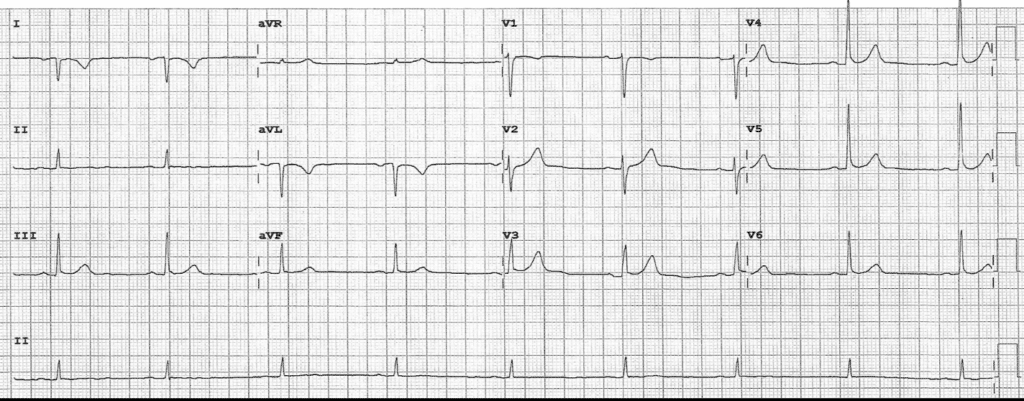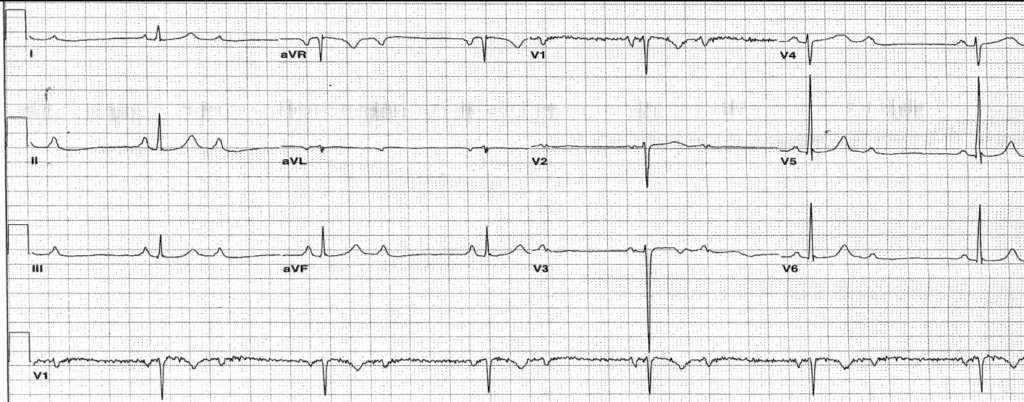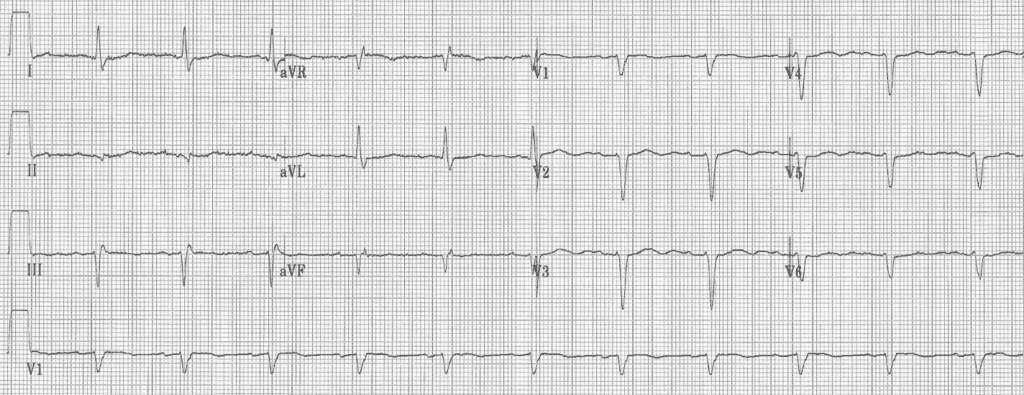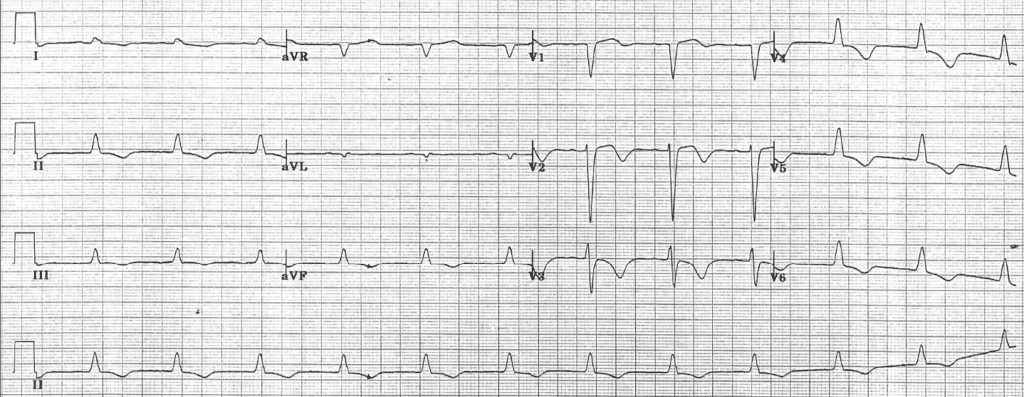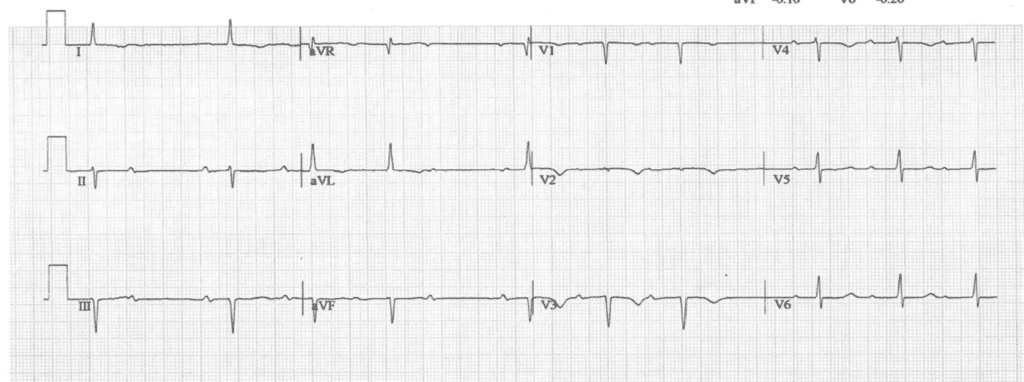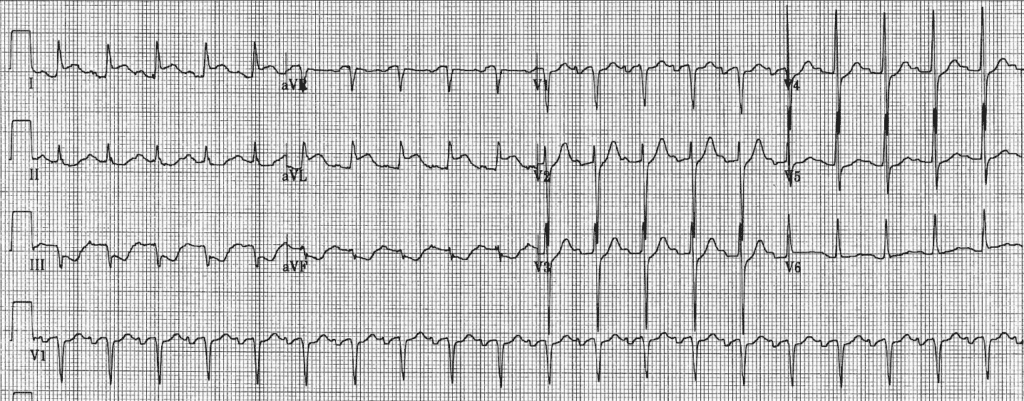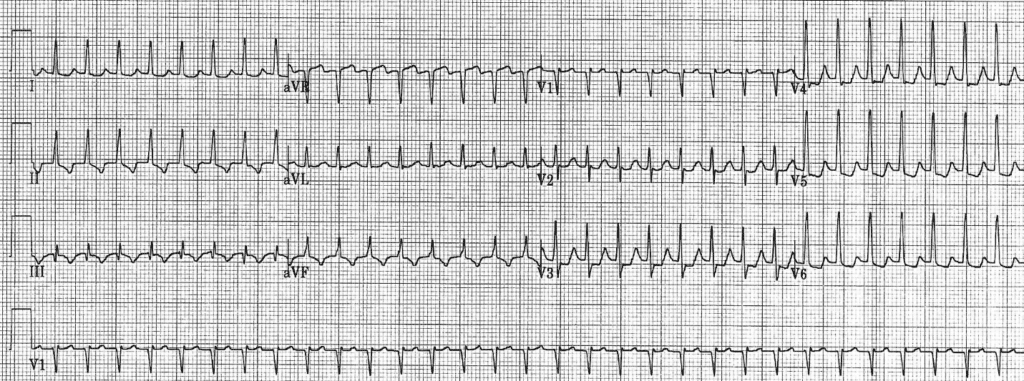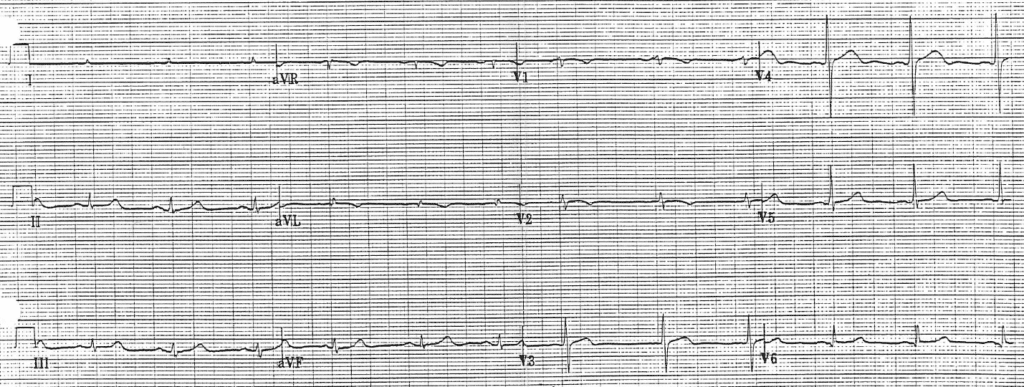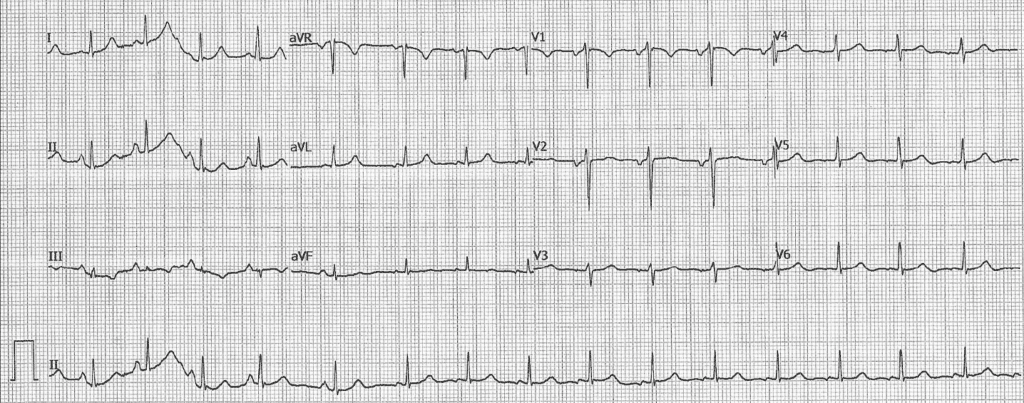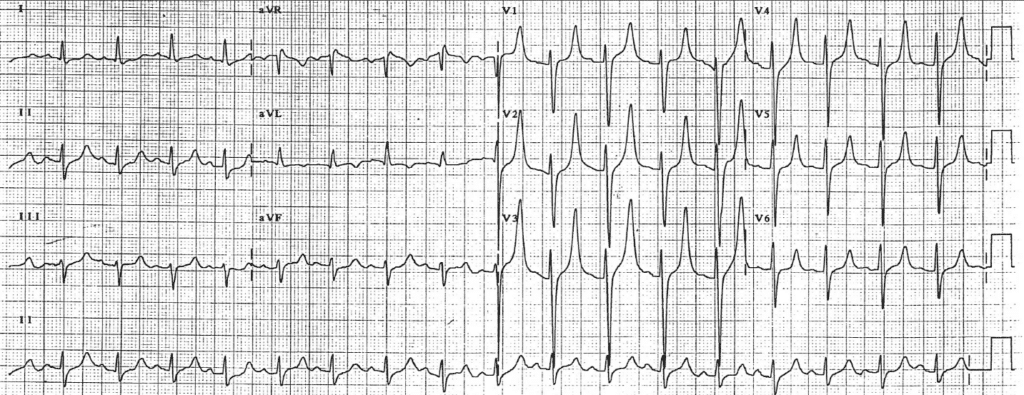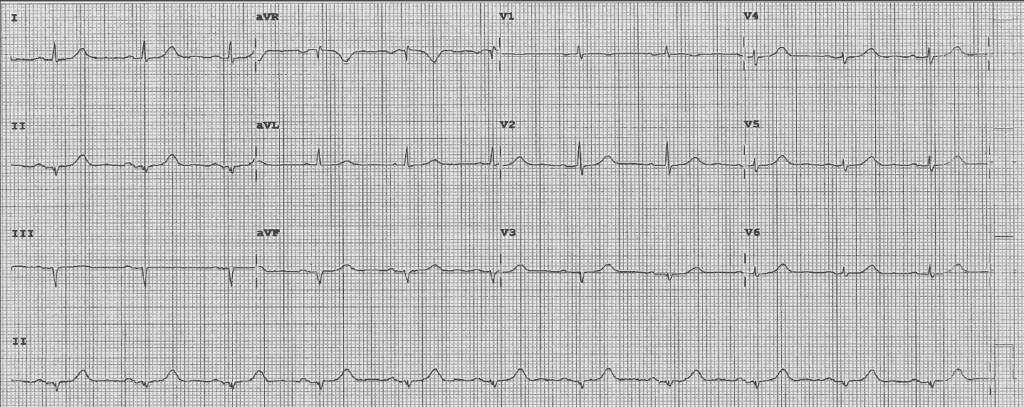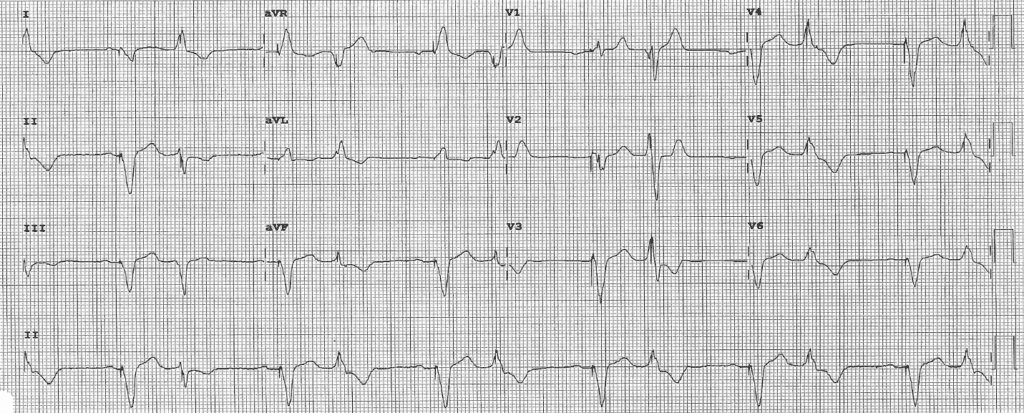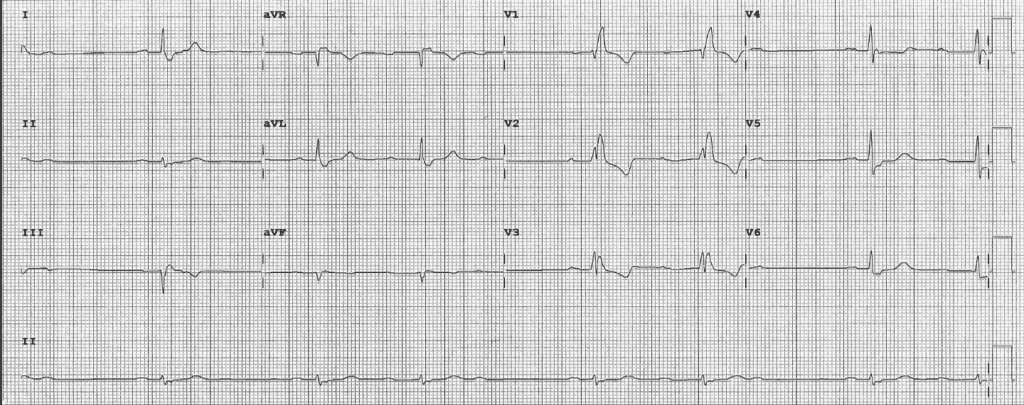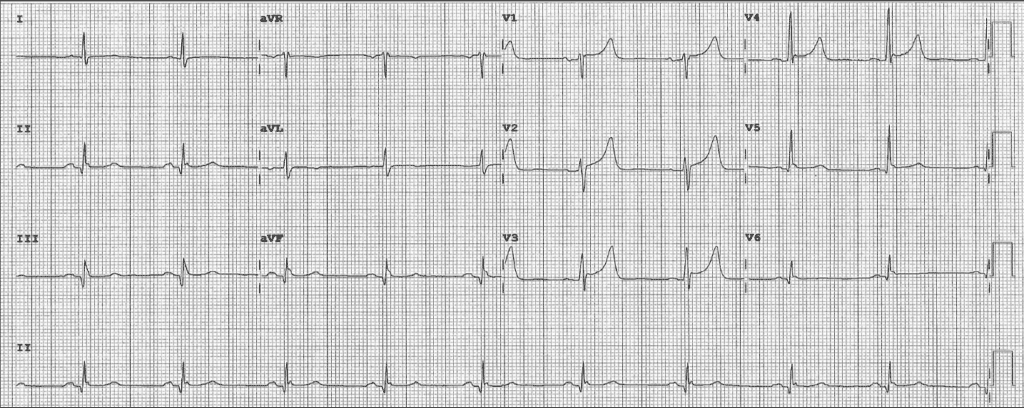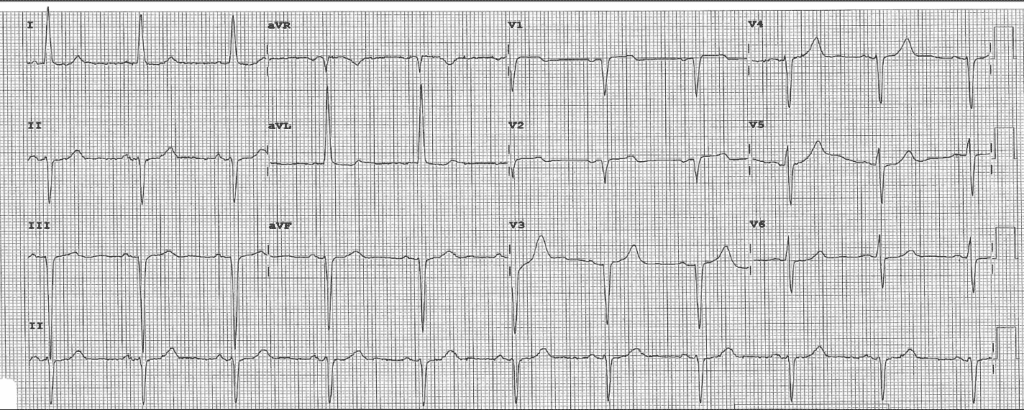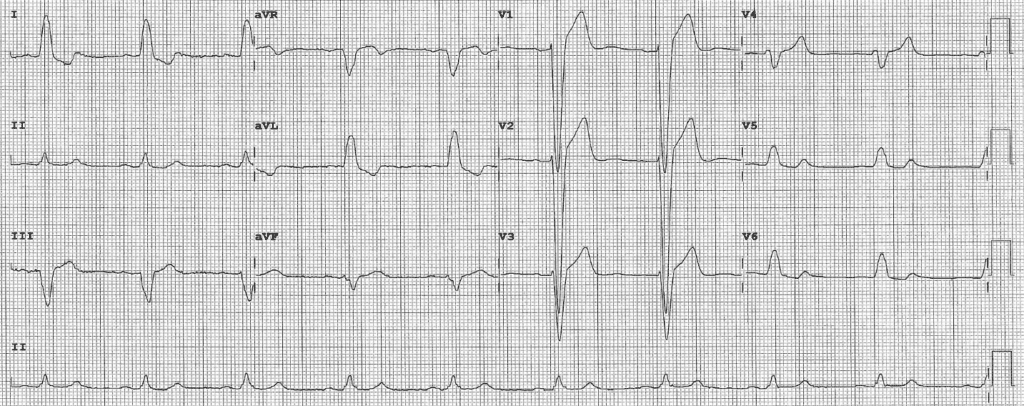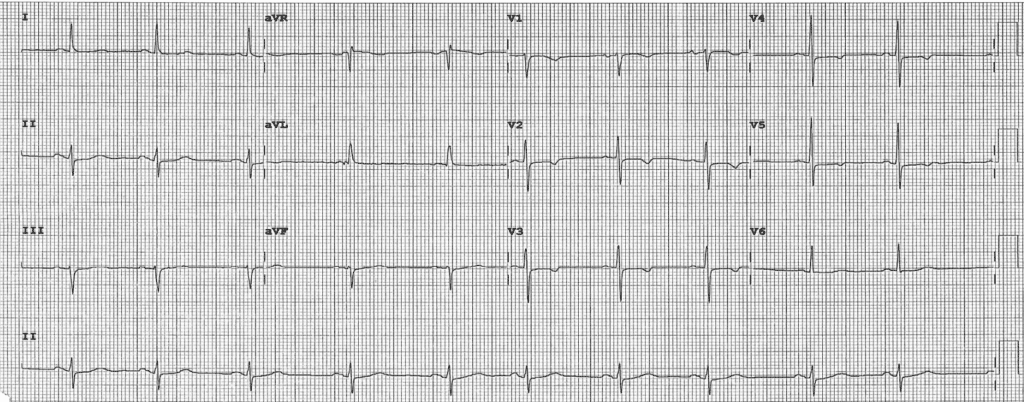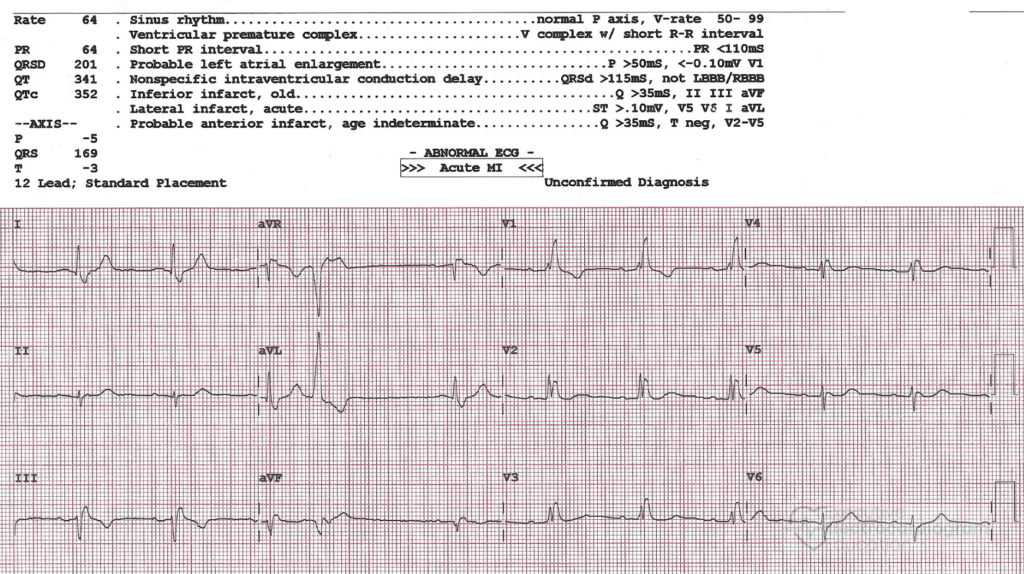Introduction to Videos - CME Course (W1)
This brief video describes the purpose and goals of this course.
Electrocardiogram (ECG) Basics - CME Course (W1)
This chapter reviews the basics of electrocardiography. Topics include calibrations, waveforms, intervals, basic conduction, and the ECG layout.
Lead Placement - CME Course (W1)
This chapter reviews ECG lead placement and setup. Topics include bipolar leads, unipolar leads, lead position, right-sided leads, posterior leads, the Lewis lead, transesophageal leads, modified chest leads (MCL), and other lead configurations.
Axis Determination - CME Course (W1)
This chapter reviews normal and abnormal axes as well as two methods for calculating the axis. This includes the P-wave axis, the QRS axis, and the T-wave axis.
Determining the Heart Rate - CME Course (W1)
This chapter reviews multiple methods for determining the heart rate on an ECG or rhythm strip.
Atrial Abnormalities - CME Course (W1)
This chapter reviews the ECG criteria for left atrial abnormality, right atrial abnormality, and biatrial abnormality.
Ventricular Hypertrophy - CME Course (W1)
This chapter reviews the ECG criteria for left ventricular hypertrophy (LVH), right ventricular hypertrophy (RVH), and biventricular hypertrophy (BVH).
Bundle Branch Blocks and Intraventricular Conduction Delays - CME Course (W1)
This chapter reviews the ECG criteria for right and left bundle branch blocks, non-specific intraventricular conduction delays, and incomplete right and left bundle branch blocks. Part 1 of this chapter suggests a simple way to memorize the criteria; part 2 describes an analogy to help more fully understand why these changes are seen on the ECG.
Fascicular Blocks - CME Course (W1)
This chapter reviews the ECG criteria for left anterior and posterior fascicular blocks.
Atrioventricular (AV) Blocks - CME Course (W1)
This chapter reviews the ECG criteria for atrioventricular (AV) blocks including first-degree AV block; second-degree AV block, Mobitz 1; second-degree AV block, Mobitz 2; third-degree AV block; and 2:1 AV block.
Atrioventricular (AV) Dissociation - CME Course (W1)
This chapter reviews the ECG criteria for atrioventricular (AV) dissociation.
Ischemia, Injury, Infarction Part 1 (General findings) - CME Course (W1)
This chapter reviews the ECG criteria for myocardial ischemia, injury, and infarction. Part 1 details the general findings on the ECG; Part 2 details why the electrocardiogram machine sees these particular changes.
Ischemia, Injury, Infarction Part 2 (Pathophysiology) - CME Course (W1)
This chapter reviews the ECG criteria for myocardial ischemia, injury, and infarction. Part 1 details the general findings on the ECG; Part 2 details why the electrocardiogram machine sees these particular changes.
ST and T wave Changes - CME Course (W1)
This chapter reviews primary and secondary ST and T wave changes. It is divided into two sections. Part 1 goes over the characteristic ECG findings of ST and T wave changes, and Part 2 reviews myocardial physiology and how the ECG machine sees ST and T wave changes.
Naming Rhythms - CME Course (W1)
This chapter reviews how to name heart rhythms including those that originate from the sinus node, the atrioventricular node (junction), the ventricles, and the atria. It also reviews how to name the ventricular rates in patients with atrial fibrillation.
Sinus Rhythms and Sinus Blocks - CME Course (W1)
This chapter reviews sinus rhythms and sinoatrial exit blocks. Topics covered include normal sinus rhythm, sinus bradycardia, sinus tachycardia, sinus arrhythmia, sinus pauses, sinus arrest, and sinoatrial exit blocks.
Atrial arrhythmias - CME Course (W1)
This chapter reviews the ECG criteria for atrial arrhythmias including premature atrial complexes (PACs/APCs); ectopic atrial rhythm; atrial bradycardia; atrial tachycardia; paroxysmal atrial tachycardia (PAT); multifocal atrial tachycardia (MAT); wandering atrial pacemaker; atrial flutter and atrial fibrillation.
Junctional Rhythms - CME Course (W1)
This chapter reviews the ECG criteria for junctional rhythms. These include idiopathic junctional rhythms, junctional bradycardia, accelerated junctional rhythm, junctional tachycardia, and brief descriptions of reentrant junctional rhythms (atrioventricular nodal reentrant tachycardia [AVNRT]; atrioventricular reentrant tachycardia [AVRT]).
Supraventricular Tachycardia (SVT) - CME Course (W1)
This chapter reviews the ECG changes associated with supraventricular tachycardia (SVT). It is divided into two parts. Part 1 gives brief definitions and descriptions of atrioventricular nodal reentrant tachycardia (AVNRT), and atrioventricular reentrant tachycardia (AVRT). Part 2 describes these in much more detail.
Ventricular Arrhythmias - CME Course (W1)
This chapter reviews the ECG criteria for ventricular arrhythmias including premature ventricular complexes (PVCs); fusion beats; idioventricular rhythms; accelerated idioventricular rhythms; ventricular tachycardia; ventricular flutter; ventricular fibrillation and torsades de pointes. Other topics include fusion beats, capture beats, interpolated PVCs, compensatory pauses, and non-compensatory pauses.
Ventricular Beats vs. Aberrancy - CME Course (W1)
This chapter reviews criteria for telling the difference between ventricular beats and supraventricular beats with aberrancy. Each criterion is detailed and several ECGs are used as examples.
QT Interval - CME Course (W1)
This chapter reviews the QT Interval. Topics include correctly measuring the QT interval, correcting the QT interval for the heart rate (QTc), and causes of prolonged and short QT intervals.
Pericarditis - CME Course (W1)
This chapter reviews the ECG changes associated with pericarditis.
Central Nervous System Effects on the ECG - CME Course (W1)
This chapter reviews the ECG changes seen with central nervous system abnormalities (in particular, intracranial hemorrhages).
Dextrocardia - CME Course (W1)
This chapter reviews the ECG changes associated with dextrocardia.
Electrolyte Abnormalities - CME Course (W1)
This chapter reviews the ECG criteria for electrolyte abnormalities including hyperkalemia, hypokalemia, hypercalcemia, and hypocalcemia. Sodium and magnesium abnormalities are touched upon.
Drug Effects - CME Course (W1)
This chapter reviews ECG changes associated with digoxin and antiarrhythmic agents. It also reviews medications that can prolong the QT interval.
Hypothermia - CME Course (W1)
This chapter reviews the ECG changes associated with hypothermia.
Preexcitation and Wolff Parkinson White (WPW) - CME Course (W1)
This chapter reviews ECG changes associated with preexcitation, Wolff Parkinson White (WPW Syndrome, Atrioventricular Reentrant Tachyarrhythmias (AVRT), and Atrioventricular Nodal-Type Bypass Tracts.
Lead Reversal - CME Course (W1)
This chapter reviews the ECG characteristics of lead reversal. This includes arm lead reversal and arm/leg lead reversal.
Pacemakers - CME Course (W1)
This chapter reviews ECG findings associated with pacemakers. It is divided into three parts. Part 1 discusses pacemaker nomenclature, normal pacemaker function, and identifying a pacemaker on an electrocardiogram. Part 2 reviews other pacemaker features and their associated ECG findings. This includes Fusion Beats; Pseudofusion Beats; Unipolar Pacing; Bipolar Pacing; Lower Rate Limit; Upper Rate Tracking Limit. Part 3 goes over ECG findings that suggest pacemaker malfunction.
Transition - CME Course (W1)
This chapter reviews transition. This includes the definitions and causes of normal transition, early transition and late transition.
Poor R Wave Progression (PRWP) - CME Course (W1)
This chapter reviews poor R wave progression and R wave reversal. It goes through an algorithm that can be used to determine the cause of poor R wave progression and show multiple ECGs as examples.
Miscellaneous ECG Findings 1 - CME Course (W1)
This chapter reviews ECG topics not found in other chapters. These include Non-specific ST and T changes; Low QRS voltage; R on T ventricular complexes; Brugada syndrome; Short PR intervals; ECG changes with pulmonary emboli; ECG changes considered pulmonary disease pattern; Electrical alternans; Interpolated premature ventricular complexes; Compensatory and non-compensatory pauses; Epsilon waves; Changes on the ECG from an internal cardiac defibrillator.
Miscellaneous ECG Findings 2 - CME Course (W1)
This chapter reviews ECG topics not found in other chapters. These include Early repolarization; and artifacts.
Guidelines to ECG Interpretation - CME Course (W1)
This chapter details a systematic approach to interpreting electrocardiograms. The method is explained and then I take you through the approach on three practice ECGs.
Practice Electrocardiograms Part 1 - CME Course (W1)
During this chapter, we will practice reading electrocardiograms using the ECG reading format outlined in the “Guidelines For Electrocardiogram Interpretation” chapter. I will take you step-by-step through the process and interpret several electrocardiograms.
(ECG #1-3)
Practice Electrocardiograms Part 2 - CME Course (W1)
During this chapter, we will practice reading electrocardiograms using the ECG reading format outlined in the “Guidelines For Electrocardiogram Interpretation” chapter. I will take you step-by-step through the process and interpret several electrocardiograms.
(ECG #4-7)
Practice Electrocardiograms Part 3 - CME Course (W1)
During this chapter, we will practice reading electrocardiograms using the ECG reading format outlined in the “Guidelines For Electrocardiogram Interpretation” chapter. I will take you step-by-step through the process and interpret several electrocardiograms.
(ECG #8-10)
QUIZ - Electrocardiogram (ECG) Basics (AEI-W1)
QUIZ - Lead Placement (AEI-W1)
QUIZ - Axis Determination (AEI-W1)
QUIZ - Determining the Heart Rate (AAI-W1)
QUIZ - Atrial abnormalities (AEI-W1)
QUIZ - Ventricular Hypertrophy (AEI-W1)
QUIZ - Bundle Branch Blocks and Intraventricular Conduction Delays (AEI-W1)
QUIZ - Fascicular Blocks (AEI-W1)
QUIZ - Atrioventricular (AV) Blocks (AAI-W1)
QUIZ - Atrioventricular (AV) Dissociation (AAI-W1)
QUIZ - Ischemia, Injury, Infarction Part 1 (General findings) (AEI-W1)
QUIZ - Ischemia, Injury, Infarction Part 2 (Pathophysiology) (AEI-W1)
QUIZ - ST and T wave Changes (AEI-W1)
QUIZ - Naming Rhythms (AAI-W1)
QUIZ - Sinus Rhythms and Sinus Blocks (AAI-W1)
QUIZ - Atrial Arrhythmias (AAI-W1)
QUIZ - Junctional Rhythms (AAI-W1)
QUIZ - Supraventricular Tachycardia (SVT) (AAI-W1)
QUIZ - Ventricular Arrhythmias (AAI-W1)
QUIZ - Ventricular Beats vs. Aberrancy (AAI-W1)
QUIZ - QT Interval (AEI-W1)
QUIZ - Pericarditis (AEI-W1)
QUIZ - Central Nervous System Effects on the ECG (AEI-W1)
QUIZ - Dextrocardia (AEI-W1)
QUIZ - Electrolyte Abnormalities (AEI-W1)
QUIZ - Drug Effects (AEI-W1)
QUIZ - Hypothermia (AEI-W1)
QUIZ - Preexcitation and Wolff Parkinson White [WPW] (AEI-W1)
QUIZ - Lead Reversal (AEI-W1)
QUIZ - Pacemakers (AAI-W1)
QUIZ - Transition (AEI-W1)
QUIZ - Poor R Wave Progression (PRWP) (AEI-W1)
QUIZ - Miscellaneous ECG Findings 1 ((AEI-W1)
QUIZ - Miscellaneous ECG Findings 2 (AEI-W1)

